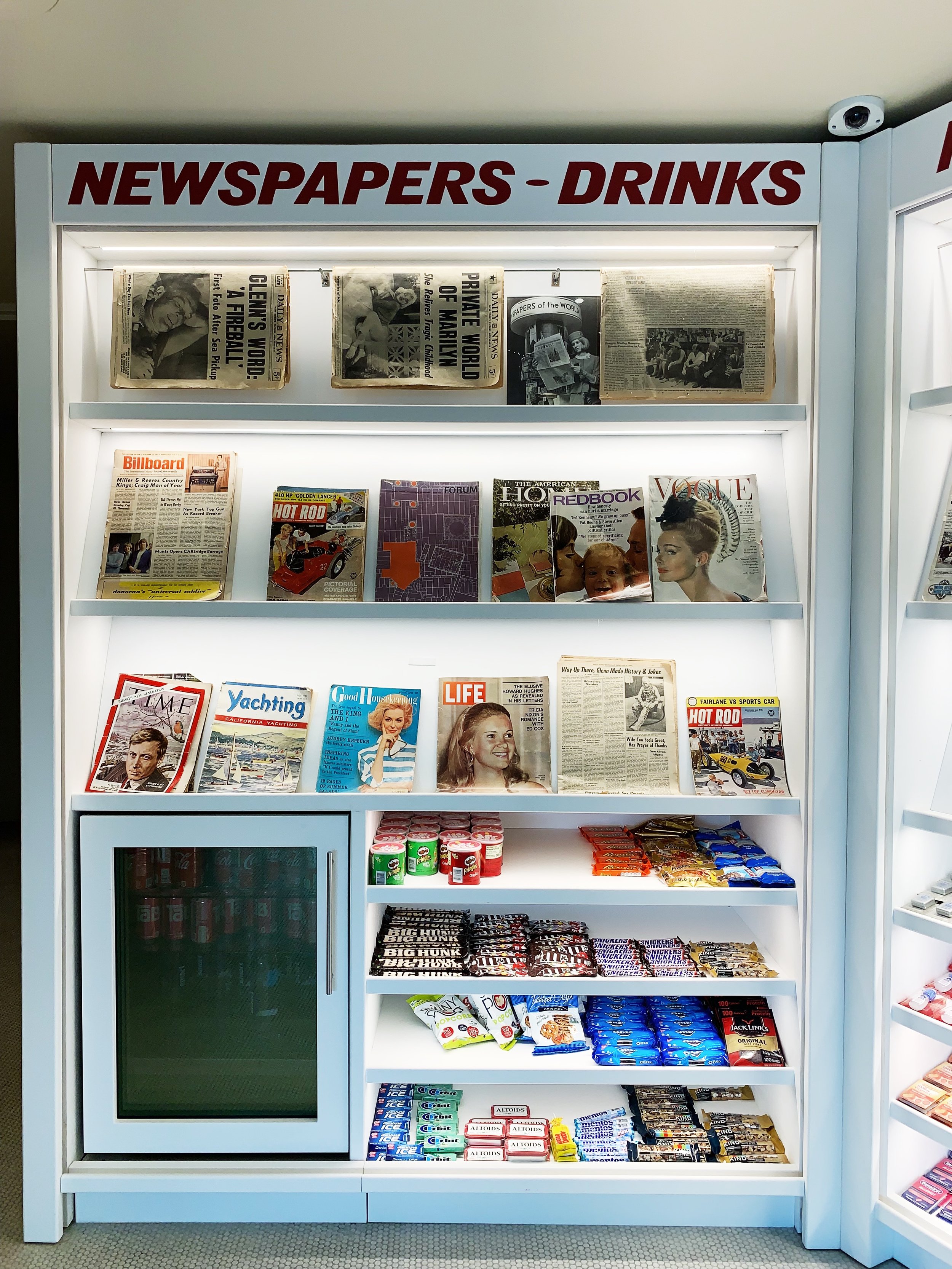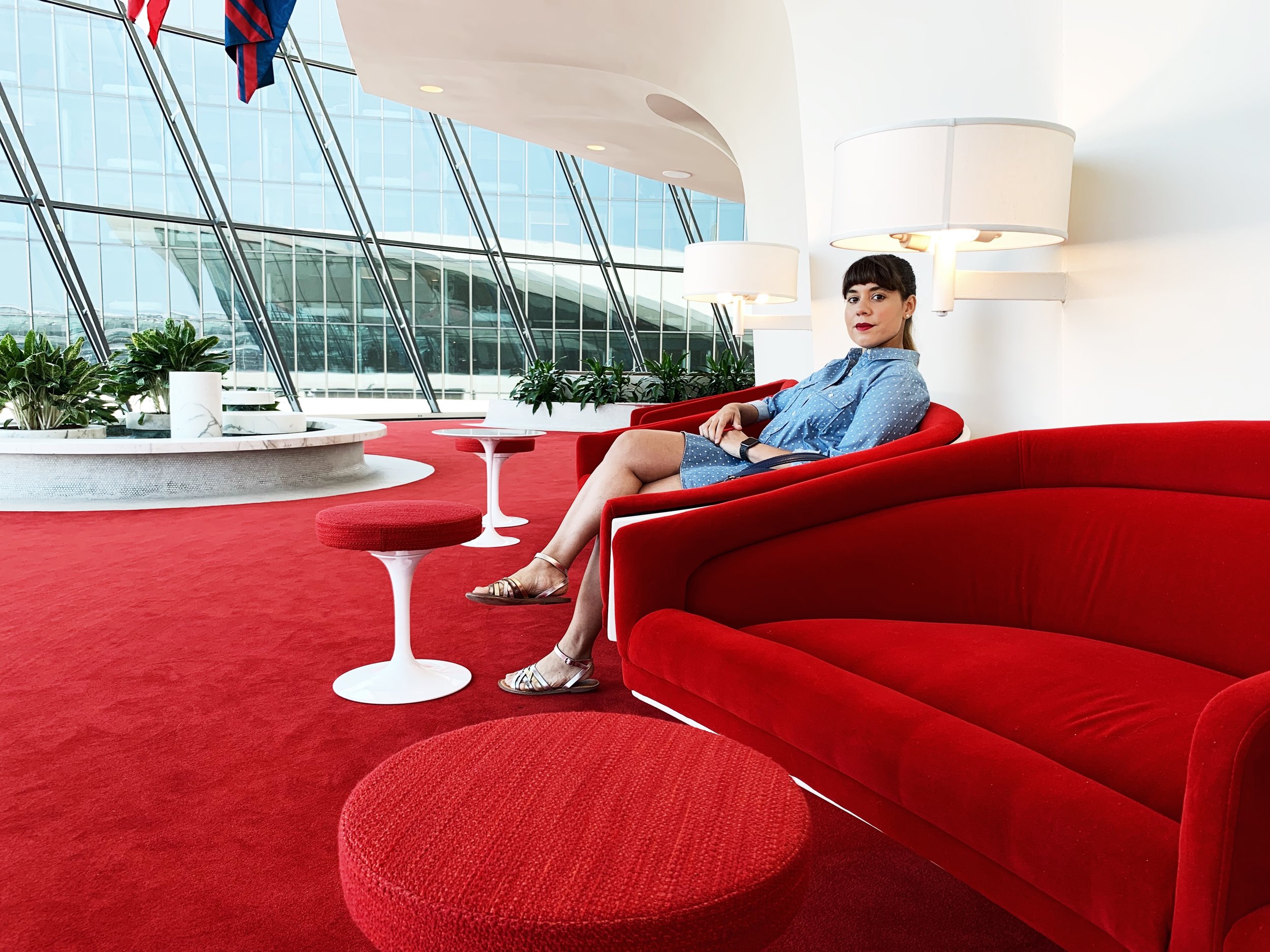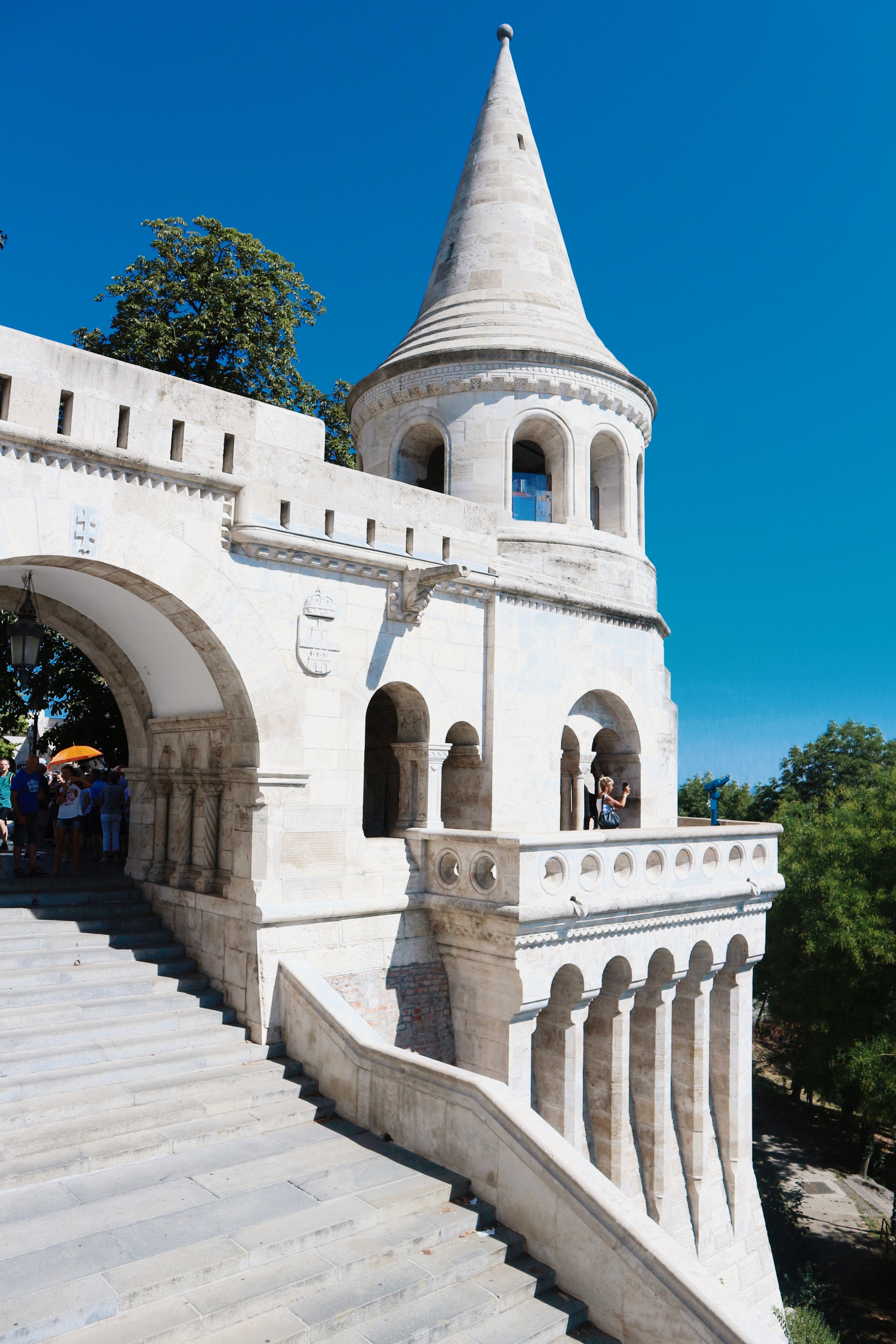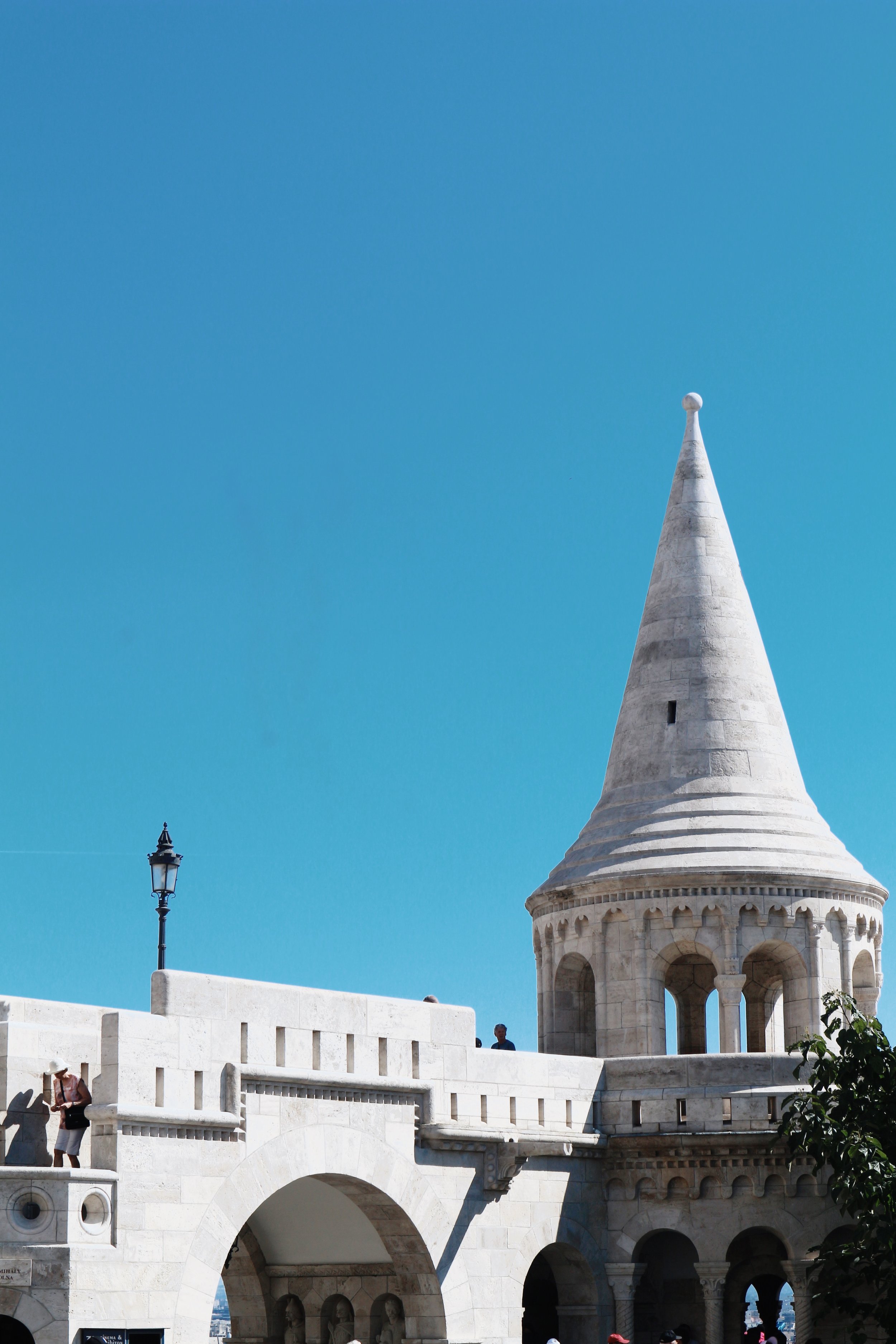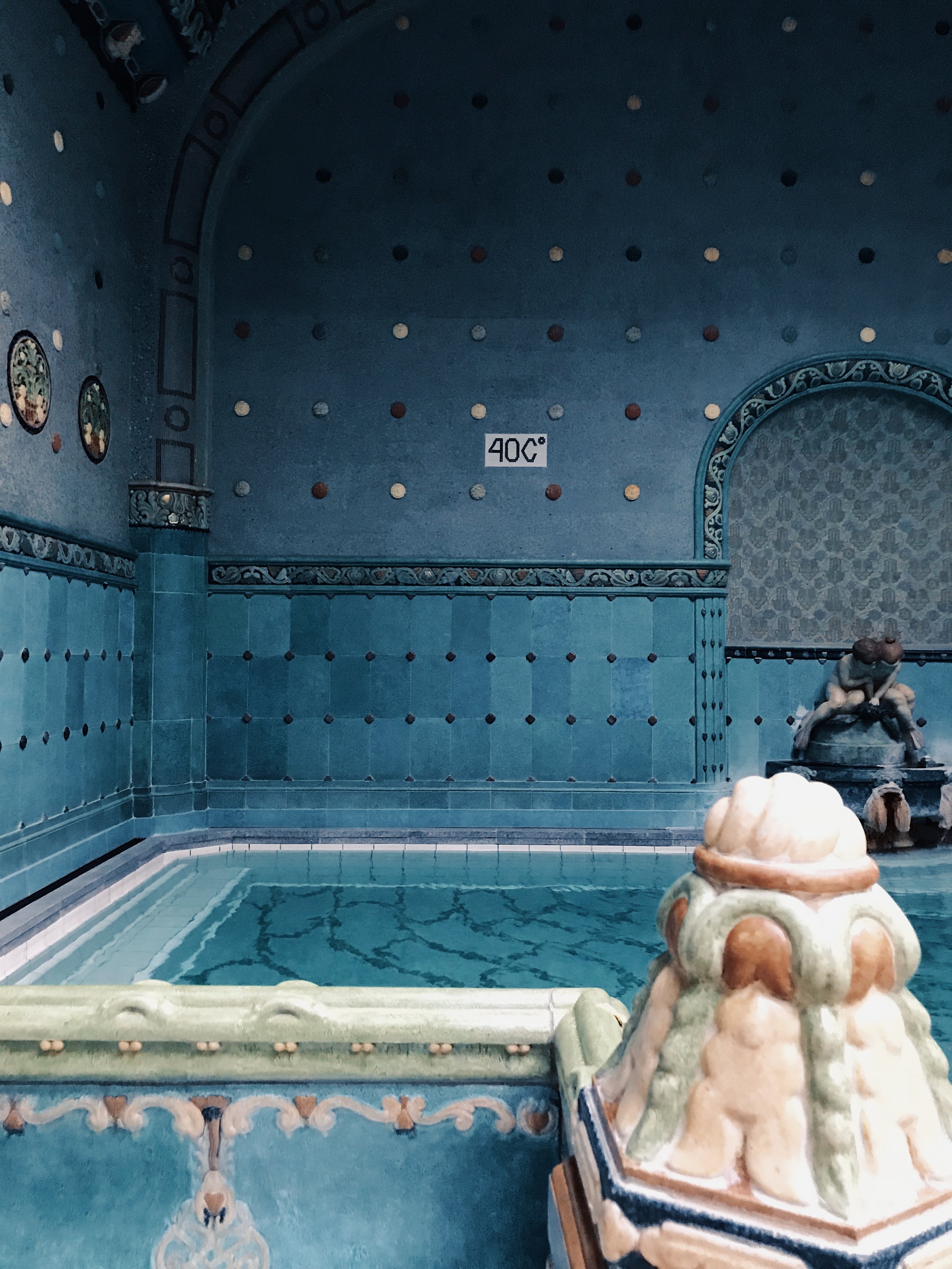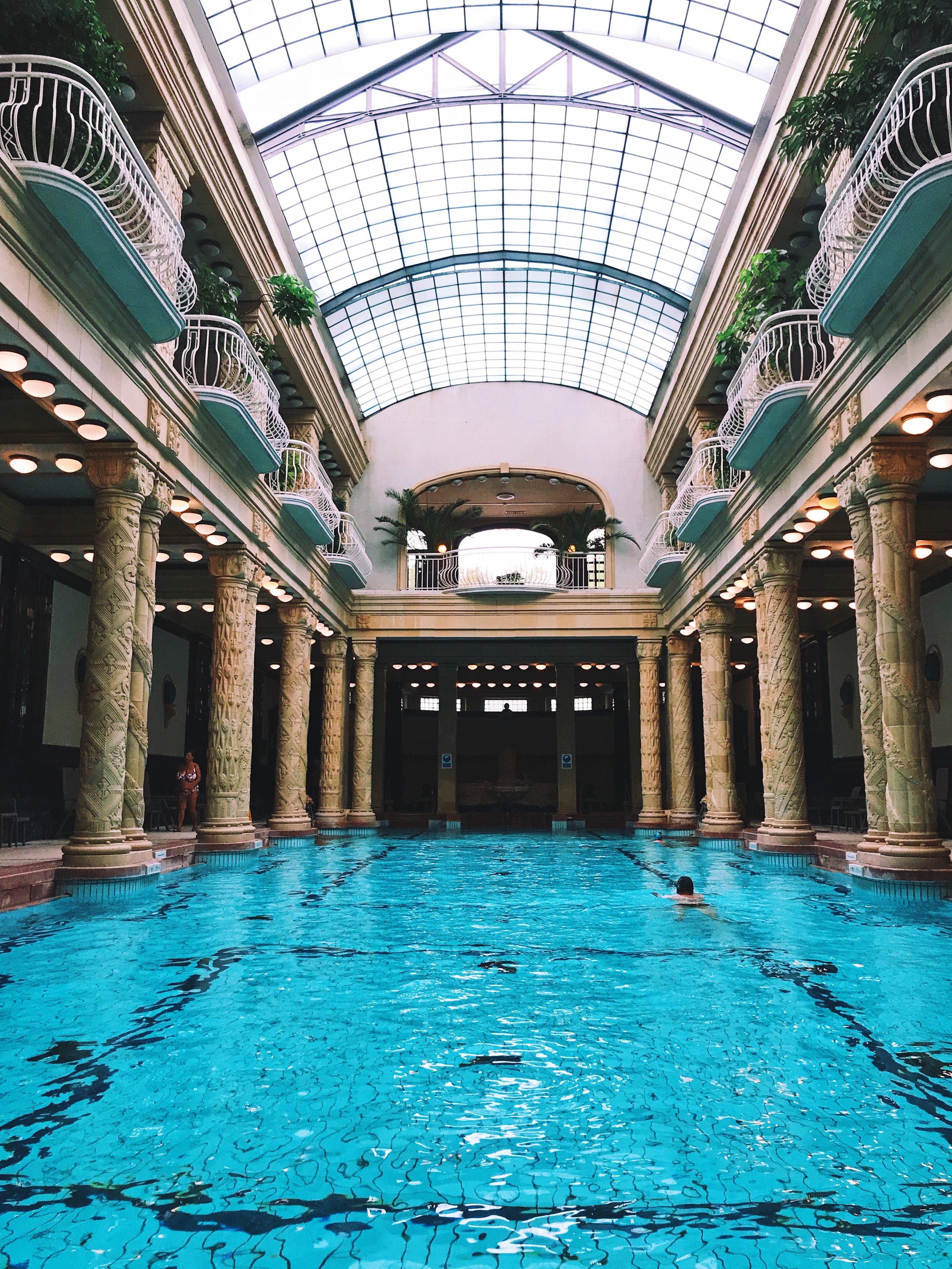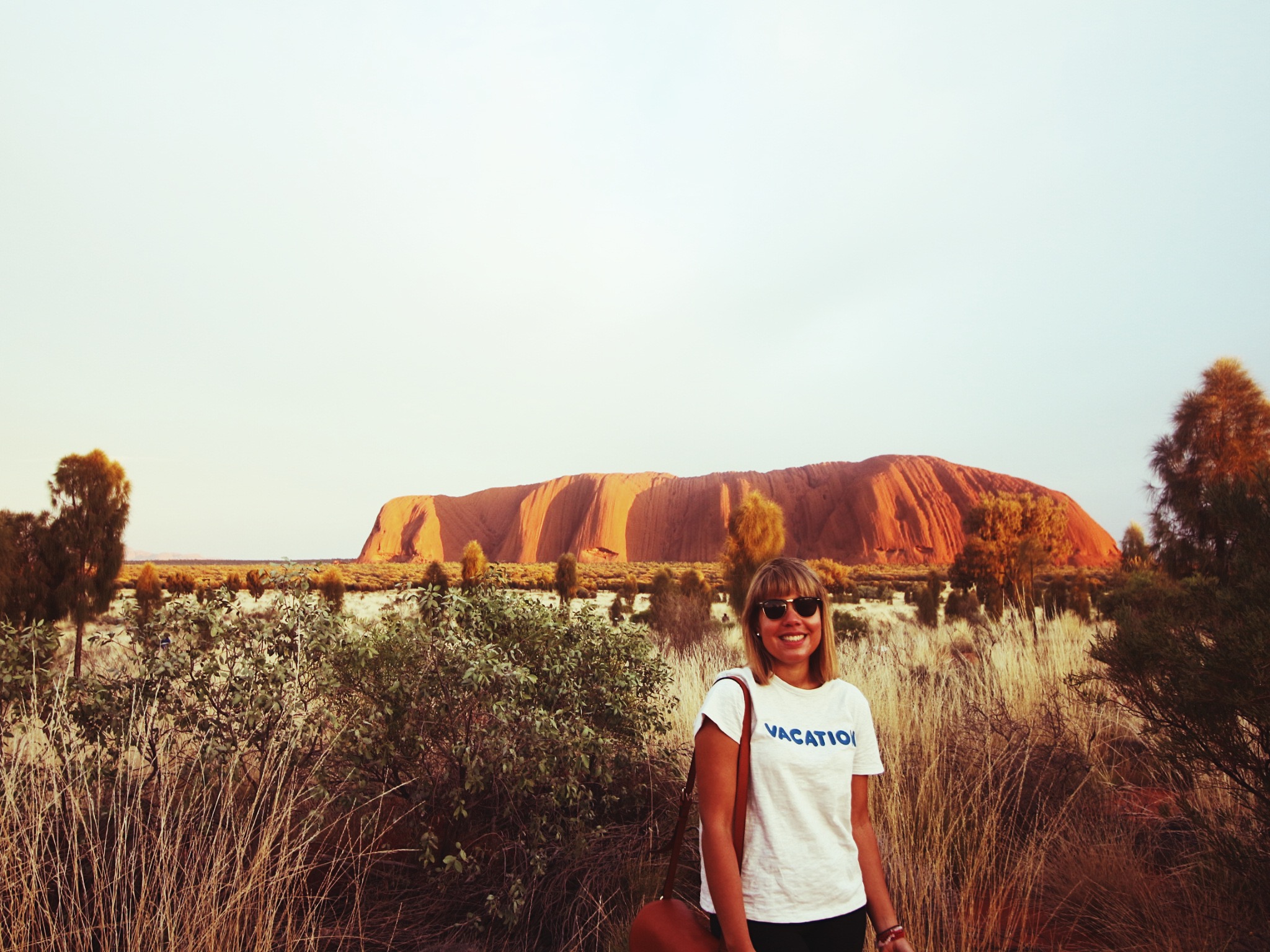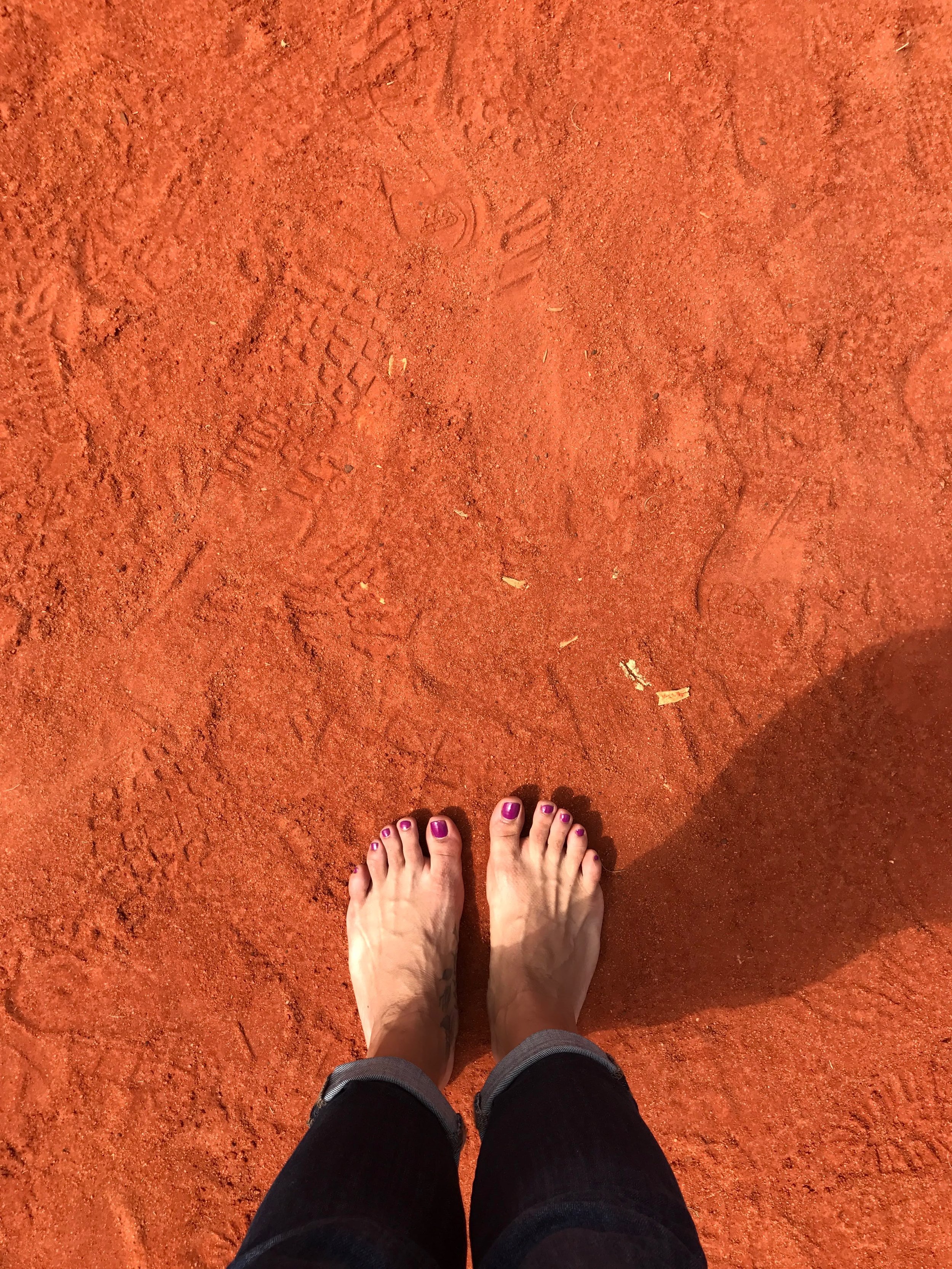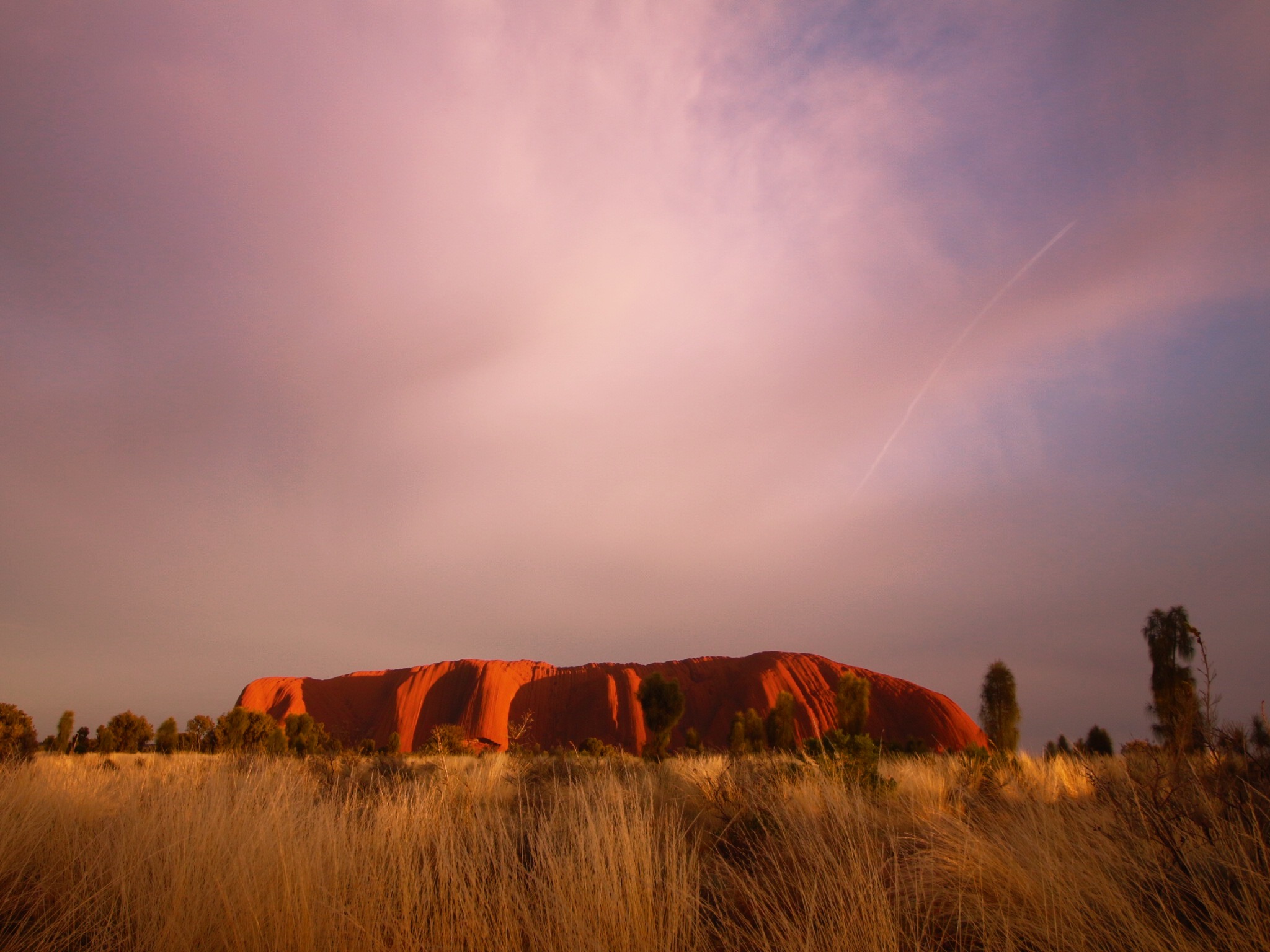A red carpet, the ultimate symbol of status, is rolled out for you the moment you enter the TWA Hotel. Literally. The carpet that covers the entrance corridors and part of the lounge areas is bright red, after the original colors of the airline. But it’s not only the carpet that makes a big impression.
I took the elevator from JetBlue’s Terminal 5 at John F. Kennedy International Airport and in a few seconds was transported in time. It was the 60s and this was the jetset lifestyle.
A makeshift office welcomes you next to a futuristic tunnel that will lead you to the hotel. Before walking through the tunnel, I couldn’t help but explore the MadMen-style desk, wooden decor and full bar (all props left there for you to take some cool antique snaps).
Inside the hotel, the celebration to this precious era of aviation continues. A monochromatic sunken lounge, a departure board with split-flaps that switches with the iconic clicks and clacks, and a wing displaying vintage flight personnel uniforms bring to life what the TWA Terminal was like back in 1962.
1962 is the year this terminal originally opened its doors. The building, known as the headhouse of the terminal, was designed by Finish architect Eero Saarinen. The design itself is considered to touch a few different styles, including Futurism, Neo-Futurism and Googee styles.
Today, the terminal is the anchor between the three buildings that make the TWA Hotel. Additional to 512 rooms, there is also a rooftop infinity pool that overlooks the active JFK runway. It’s an amazing sight and one of my favorite parts of the hotel.
If you’re feeling peckish, try one of the many food options: a restaurant by Jean Georges called Paris Café, the Pool Bar, The Sunken Lounge or the Connie Cocktail Lounge (a lounge inside a vintage airplane!)
Good to know:
Rooms:
Average per night is around USD$ 250 depending on how far in advance you book.
But you can book a room for 4 hrs to rest between layovers for $150.
Pool:
You can get access to the pool by staying at the hotel or by reserving a table at the Pool Bar.
Website: https://www.twahotel.com
Address:Terminal 5, 6 Central Terminal Area, Jamaica, NY 11430








